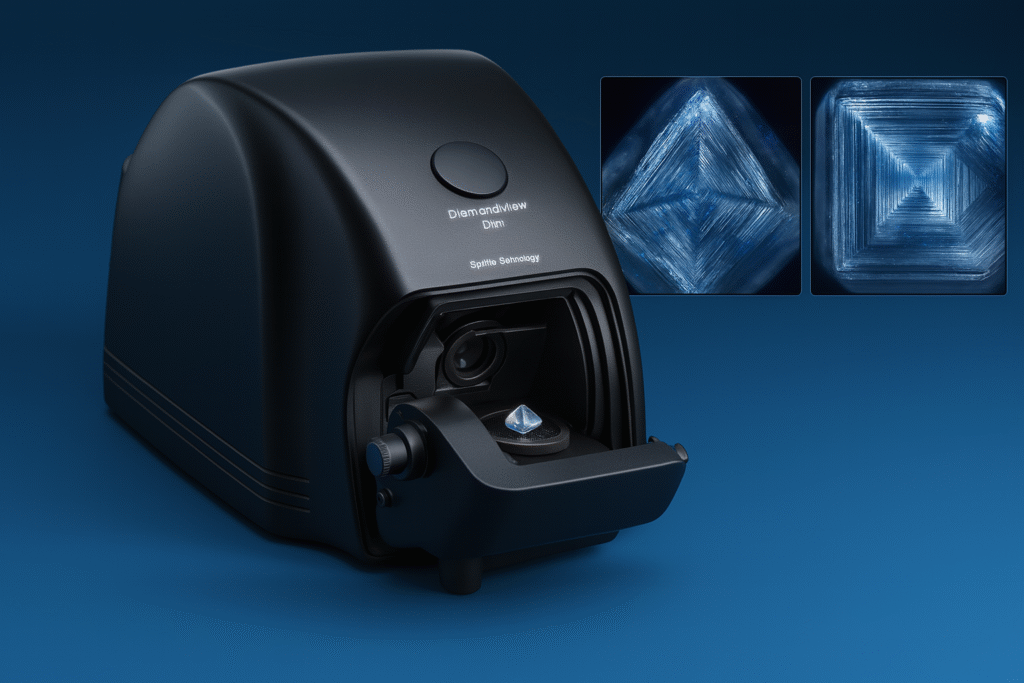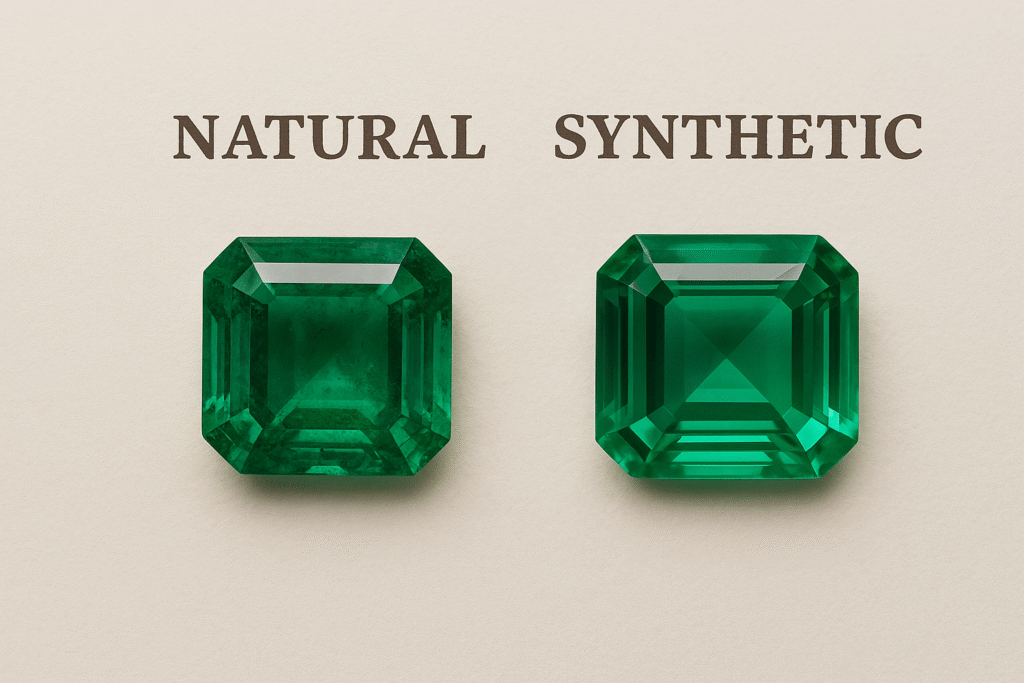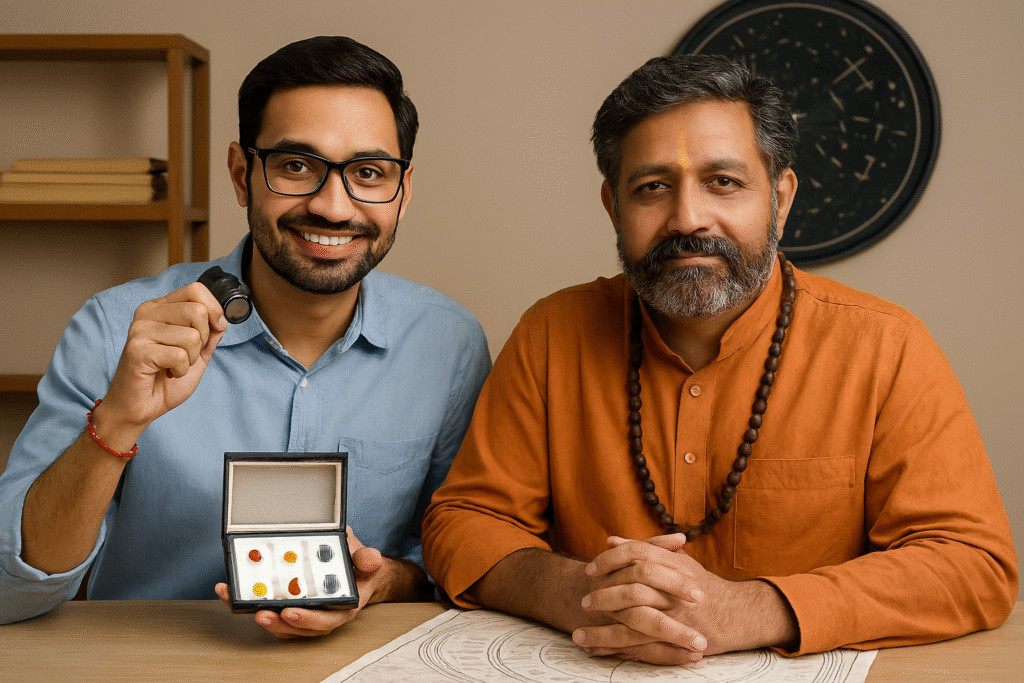Table of Contents
- Introduction
- How DiamondView Zoom Verification Works
- Who Should Use the DiamondView Verification Tool
- Benefits and Features of DiamondView Verification
- FAQs About DiamondView Zoom Verification
Introduction
DiamondView Zoom verification is the most reliable method by De Beers to determine whether a diamond is natural or laboratory grown. Using shortwave ultraviolet light, this device captures fluorescence patterns on the diamond surface, showing if a diamond is natural or a CVD/HPHT lab-grown diamond. Research confirms 0% false positives for natural diamonds. Wholesale dealers, gemological laboratories, and jewelry businesses rely on DiamondView Zoom verification for fast, accurate diamond authenticity testing.
How the DiamondView™ Zoom Verification Works
- Illuminate the diamond with shortwave UV light.
- Fluorescence patterns are captured using an UltraXGA USB 3.0 camera.
- Software highlights growth features to determine origin: natural, CVD, or HPHT lab-grown.
- Works on diamonds from 0.01–10 carats, including colorless and fancy-colored stones.
- Provides quick and conclusive analysis, suitable for high-volume testing.
See also: Natural Diamond Council
Who Should Use This Diamond Verification Tool
- Wholesale dealers of loose diamonds
- Gemological and research laboratories
- Retailers verifying diamonds flagged by screening devices
- Jewelry businesses testing simple mounted pieces such as rings or earrings
Further reading: Gold Buying Checklist for Malayalis
Benefits and Features of DiamondView Verification
- Accurate verification of natural vs lab-grown diamonds
- Detects CVD and HPHT lab-grown diamonds
- Works on all diamond colors and cuts
- NDC Assure certified with 0% false positives
- Optional user training available
- 1-year parts and service warranty
- Replaceable emission filters highlight growth features
- Suitable for both loose diamonds and simple jewelry
FAQs About About DiamondView Zoom Verification
Q1: Can mounted jewelry be tested?
Yes, simple rings and earrings can be verified.
Q2: What size range does it cover?
From 0.01 to 10 carats, covering melee to large diamonds.
Q3: Who benefits most from this tool?
Wholesale traders, gem labs, and retailers verifying diamond authenticity.
Introduction
This comprehensive Watch Buying Guide answers the most common questions about timepieces.
Whether you’re purchasing your first watch or adding to your collection, these expert insights help you make informed decisions.
From understanding movement types to choosing the right size for your wrist, you’ll find everything needed before making a purchase.
What Types of Watches Should You Consider? – Watch Buying Guide Insights
Understanding the five main categories helps narrow your options:
- Mechanical watches – Use springs and gears. No battery needed.
- Quartz watches – Battery-powered; most accurate.
- Automatic watches – Wind themselves from wrist movement.
- Digital watches – Display time numerically on a screen.
- Smartwatches – Connect to your phone and track fitness data.
Accuracy Expectations – Watch Buying Guide Tips
- Quartz watches – Lose about 15 seconds per month.
- Mechanical watches – Lose 20–40 seconds per day.
- Atomic watches – Lose 1 second every 100 million years.
- Your phone’s clock stays perfectly accurate.
Water Resistance Considerations
Water resistance ratings affect usage scenarios:
- 30m – Handles rain and handwashing
- 50m – Safe for swimming
- 100m – Suitable for snorkeling
- 200m+ – Scuba diving
Replace gaskets every 2–3 years to maintain resistance.
Maintenance Schedule – Watch Buying Guide Advice
- Quartz watches – Battery replacement every 1–3 years.
- Mechanical watches – Full service every 3–5 years.
- Service costs: $200–800 depending on the brand.
Watch for stopping, running fast/slow, or condensation under the crystal.
Pricing Strategy
- Budget watches – Plastic cases, basic movements
- Mid-range watches – Steel cases, reliable mechanisms
- Luxury watches – Precious metals, hand-finished details
Remember: craftsmanship, materials, and brand prestige drive prices.
Sizing Advice
- 6–7 inch wrists – 38–42mm
- 7–8 inch wrists – 40–44mm
- 8+ inch wrists – 42–46mm
Ensure lugs don’t overhang wrist edges.
Complications to Prioritize
- Date display – Useful daily
- GMT hand – Second time zone
- Chronograph – Stopwatch
- Moon phase – Decorative
- Annual calendar – Adjusts month lengths
More complications = more things that can break.
Maintenance Tips
- Clean with a soft cloth
- Avoid extreme temperatures & magnets
- Wind manual watches daily
- Use watch winders for automatics
- Don’t adjust date between 9 PM–3 AM
Investment Potential
- Most watches lose value after purchase
- Only select Rolex, Patek Philippe, Audemars Piguet models appreciate
- Vintage watches from 1960s–70s show strong growth
- Buy watches you enjoy wearing, not solely for investment
Essential Tools
- Spring bar tool
- Case back opener
- Soft polishing cloth
- Watch cushion
- Demagnetizer
Where to Purchase
- Online – Better selection, often cheaper
- Physical stores – Try before buying
- Authorized dealers – Full warranties
- Grey market – Discounts, limited warranty
- Forums/eBay – Vintage pieces, verify authenticity
Learn More:
- Family Fun Magnify glass: Not suitable for professional serious biologists. This electronic microscope is a very interes…
- Mini Magnifier Microscope: 2 million pixels, 1080P HD picture quality for smartphone, 720P for computer, The built-in 8 …
- Wifi & USB Function: App Provided. This cell phone microscope can not only connect to your smartphone via wifi function …




